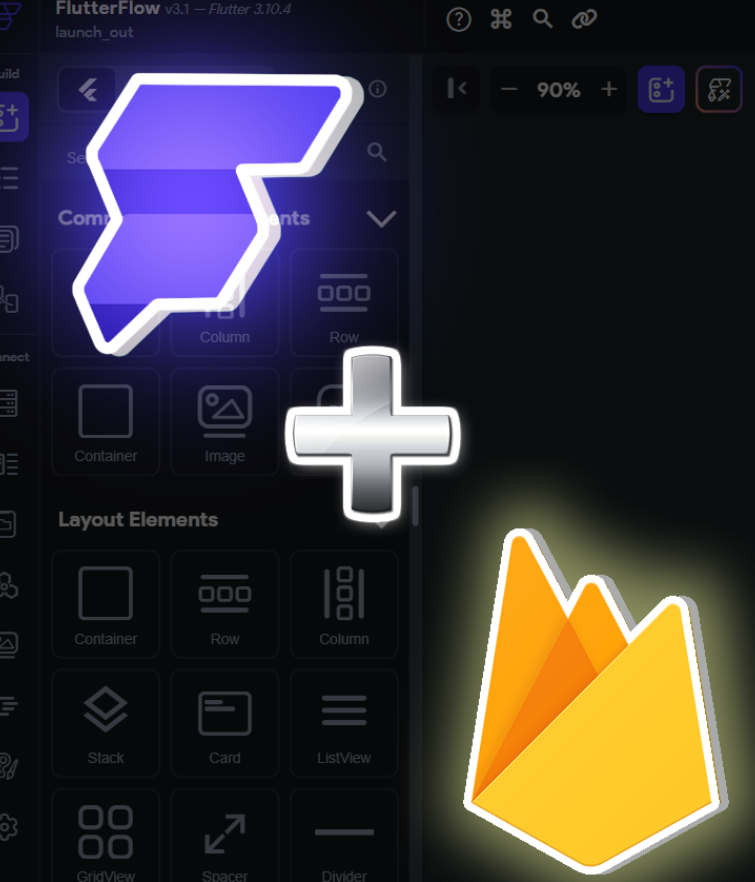In the rapidly evolving landscape of app development, the synergy between frontend frameworks and backend services plays a pivotal role in crafting seamless user experiences. Flutter, Google's UI toolkit for building natively compiled applications for mobile, web, and desktop from a single codebase, has gained significant traction among developers for its expressive and flexible nature. In parallel, Firebase, Google's mobile and web application development platform, offers a comprehensive suite of tools for app development, including authentication, cloud storage, real-time databases, and more. Combining the power of firebase flutterflow, developers can create robust and scalable applications efficiently. In this article, we delve into the integration of Firebase with Flutter through FlutterFlow, exploring its capabilities and benefits.
Understanding FlutterFlow: FlutterFlow is a visual UI builder and development platform that simplifies the process of building Flutter applications. With FlutterFlow, developers can design and prototype UIs visually, drag-and-drop components, and generate Flutter code automatically. This streamlined approach to app development accelerates the iteration cycle and empowers developers to focus on crafting engaging user experiences rather than getting bogged down by tedious coding tasks.
Integration with Firebase: One of the key strengths of FlutterFlow is its seamless integration with Firebase. By incorporating Firebase services into FlutterFlow projects, developers can leverage the full spectrum of Firebase's features to enhance their applications. Let's explore some of the core Firebase services and how they complement Flutter development:
- Authentication: Firebase Authentication provides a robust and secure solution for user authentication, supporting various authentication methods such as email/password, phone number, social media login, and more. With FlutterFlow, integrating Firebase Authentication into an app is straightforward, allowing developers to implement user authentication flows with minimal effort.
- Cloud Firestore: Cloud Firestore is a flexible, scalable database for mobile, web, and server development. It seamlessly synchronizes data between clients and the cloud, enabling real-time updates and offline support. By integrating Cloud Firestore with FlutterFlow, developers can build dynamic and responsive applications that store and retrieve data efficiently.
- Cloud Storage: Firebase Cloud Storage offers secure and scalable object storage for user-generated content such as images, videos, and documents. With FlutterFlow, developers can easily incorporate Cloud Storage into their apps to enable features like file uploads, downloads, and media sharing.
- Real-time Database: Firebase Realtime Database is a cloud-hosted NoSQL database that stores data in JSON format and synchronizes it across connected clients in real-time. This enables collaborative and interactive features such as live chat, multiplayer gaming, and collaborative editing. By integrating Firebase Realtime Database with FlutterFlow, developers can create immersive real-time experiences for their users.
Benefits of Using FlutterFlow with Firebase: The integration of FlutterFlow with Firebase offers several benefits for Flutter developers:
- Rapid Development: FlutterFlow's visual UI builder accelerates the development process, allowing developers to create UIs quickly and iterate on designs effortlessly.
- Seamless Integration: FlutterFlow seamlessly integrates with Firebase, enabling developers to leverage Firebase's powerful backend services without writing extensive code.
- Scalability: Firebase's cloud-based infrastructure scales effortlessly to accommodate growing user bases and increasing data loads, ensuring that applications built with FlutterFlow remain performant and responsive.
- Real-time Updates: Firebase's real-time database and synchronization capabilities enable developers to build interactive and collaborative features that update in real-time, enhancing user engagement and retention.
Conclusion: The integration of Firebase with FlutterFlow unlocks a wealth of possibilities for Flutter developers, enabling them to build feature-rich and scalable applications with ease. By leveraging Firebase's robust backend services and FlutterFlow's intuitive UI builder, developers can streamline the app development process and deliver compelling user experiences across platforms. As the mobile and web development landscape continues to evolve, the combination of Flutter and Firebase remains a formidable duo for building innovative and impactful applications.
For more details, visit us:
